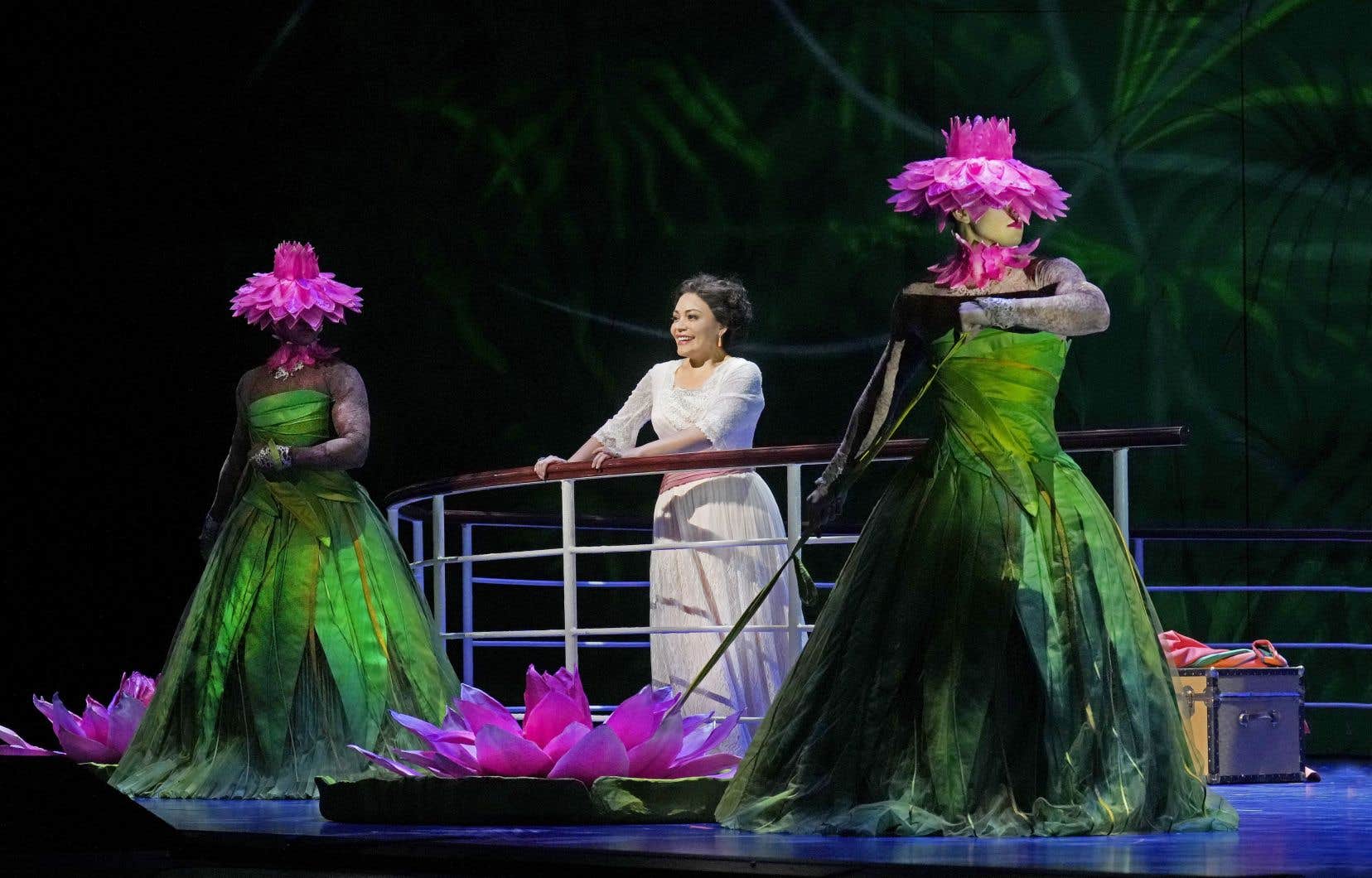The Metropolitan Opera broadcast the first Spanish-language opera to be presented there in a century in cinemas around the world on Saturday, Florencia in the Amazon, by composer Daniel Catán. What could appear as a new call from the communitarian side of the institution has above all proven to be a legitimate and major accession to the repertoire of an opera that is exciting and admirable in every way.
Florencia in the Amazon, by Daniel Catán, is an opera created in 1996, commissioned at the time by the opera houses of Houston, Los Angeles and Seattle. See this work succeed X: The Life and Times of Malcolm by Anthony Davis — an opera from 1986, which also obtained, long after its creation, the “consecration” of the Met —, beyond “diversity-inclusion” questions, opens a new perspective on the programming of the Metropolitan Opera. There is perhaps a desire to examine what, in the last four decades, can be “sifted” to become a “repertoire of our times”. As such, it will be interesting to see if the Met — beyond the problem of addressing sexual, African-American, or linguistic minorities — will now be interested in possible new classics like Written on Skin of Benjamin, Innocence from Saariaho or Julie by Boesmans to truly establish a new repertoire.
Legacies
From this new repertoire, Florencia in the Amazon is a flagship. We must greatly thank Yannick Nézet-Séguin for recognizing him and giving him such a setting and such a showcase. To appreciate it, we must put aside any idea of “progress” in music. We are in 1996, but the musical universe is at the confluence of the last Puccini (Turandot) and Erich Wolfgang Korngold (The dead city). Both in the singing and the treatment of the orchestra, it really recalls the Italian language of the turn of the 20th century.e century, but with the heady swirls of 1920s Vienna.
Through the structures, the culture of Daniel Catán digs deeper with large ensembles (there are seven protagonists) which recall the sextets and ensembles of Mozart, Donizetti and Verdi. There are also very powerful duets, sometimes for close voices, including the one between Florencia and her biographer towards the end of the opera. In short, he has wonderful intelligence, culture and sensitivity. This refinement also affects the orchestration, which we did not always feel finely enough: there is a marimba which gives a particular coloring to the episodes illustrating the river. This instrument was not very audible.
But the absolute gem of Florencia in the Amazonit is the libretto by Mexican writer Marcela Fuentes-Berain, emulator of Gabriel García Márquez, whose poetic and magical realism she summons. Florencia in the Amazon recounts the journey on a boat along the Amazon of Florencia Grimaldi, a South American diva who returns to her country to perform in the legendary Manaus Opera while hoping to reunite with her lover of twenty years earlier, a butterfly researcher . On the boat are a biographer who will fall in love with the captain’s nephew and a couple in crisis.
Colorful show
The questions raised by the text and the situations are innumerable: transcendence of the artist (Florencia) through the love of the butterfly researcher who sacrificed himself for her; cathartic experience of a storm, which will reveal truths that everyday life has buried. The river will take on a metaphorical dimension; its course is life, and it carries love whose presence influences or guides our existence. The end of the opera raises the question of what we can control and what dominates us.
Florencia in the Amazon of the Met was placed in the hands of Mary Zimmerman, a perfect choice for a magical spectacle, as inspiring as, once upon a time, The Magic Flute by Julie Taymor. Zimmermann — regularly invited to design productions at the Met since Lucia di Lammermoor in 2007 with Natalie Dessay — worked notably on Rusalka of Dvořák and Eurydice by Matthew Aucoin. With simple, yet evocative and aesthetic means, created by set designer Riccardo Hernández, costume designer Ana Kuzmanić, lighting designer TJ Gerckens, projection designer S. Katy Tucker and choreographer Alex Sanchez, she poetically translates the magic of nature .
Directed by Yannick Nézet-Séguin, the cast is led by two superb sopranos, Ailyn Pérez in the role of Florencia Grimaldi and Gabriella Reyes in that of her biographer. The latter is courted by the captain’s nephew, Arcadio, played by the excellent tenor Mario Chang. No weakness in the rest of the set of a show to be seen in broadcast on demand or during rebroadcast in cinemas. A final word on the very amusing exalted animation of Mexican tenor and director Rolando Villazón.
